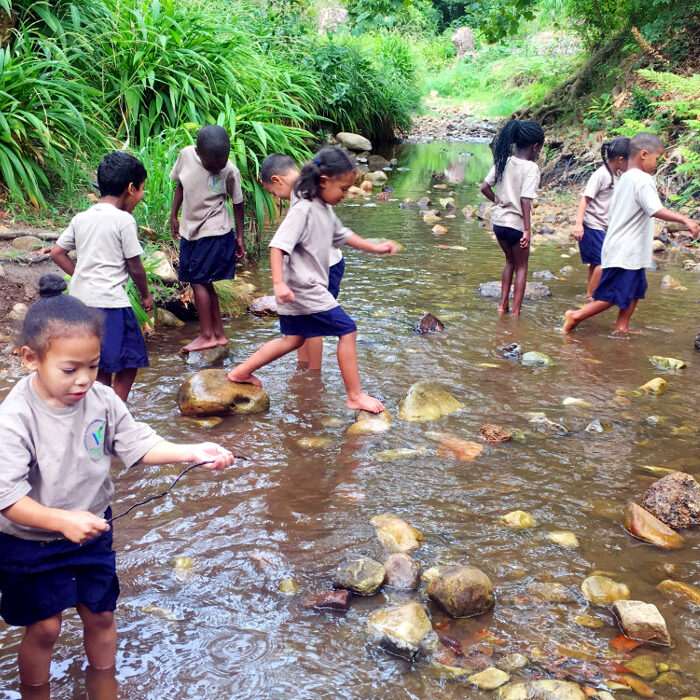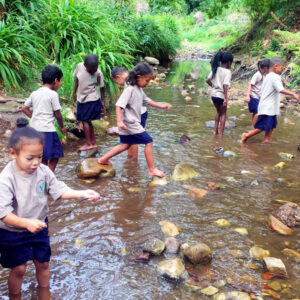Founding a School
There are few things so difficult and few things so rewarding as founding an Ambleside School, doing so changes lives.
Founding a School
There are few things so difficult and few things so rewarding as founding an Ambleside School, doing so changes lives.
We feel that the country and indeed the world should have the benefit of [these] educational discoveries which act powerfully as a moral lever.
— CHARLOTTE M. MASON —
We feel that the country and indeed the world should have the benefit of [these] educational discoveries which act powerfully as a moral lever.
CHARLOTTE M. MASON

Learn more about starting an Ambleside School
Ambleside Schools International provides guidance and support to visionary teams who are called to establish an Ambleside School in their community.
Ambleside Schools’ Development Process: Introduction
Starting an Ambleside School requires choosing a distinctive philosophy and practice of education rooted in the scriptural principles of Jesus Christ and the pedagogical insights of Charlotte Mason. Ambleside Schools International supports founders interested in becoming a member school through a comprehensive five-stage development process that includes training, leadership materials, best practices in operations, curriculum, consultation, and accountability.
Successful founders first discern God’s calling to start an Ambleside School through prayer and careful study. They develop a thorough understanding of Charlotte Mason’s educational philosophy and confirm that their community needs and would benefit from this unique approach.
This is a process that requires continual walking in God’s presence, seeking His provision, and a good deal of work. The development process guides founders through the discernment stage to acquiring the necessary skills and resources to lead and operate a flourishing Ambleside School.
Stage One: Foundations
This introductory stage focuses on understanding Ambleside’s educational philosophy and determining readiness for school development. Prospective founders watch introductory videos about an Ambleside education, read foundational materials about Charlotte Mason’s approach, and attend a three-day ASI Internship. They complete strengths assessments, conduct market research, and work through initial Herzog SchoolBox courses supporting the new organization. The stage concludes with submitting a formal School Founder Application.
Stage Two: Philosophy and Community Building
Stage Two deepens understanding of Ambleside’s educational principles while building community support. Founders study Charlotte Mason’s educational principles in detail, learning about concepts like “The Meaning of Must” and “The Behavior of Ideas.” They develop strategies for creating awareness and building community support, establish prayer and study groups, and begin forming leadership teams. This stage includes drafting mission and vision statements, understanding the roles and responsibilities of the Board, and, if both parties concur, signing the Member School Contract.
Stage Three: Leadership Development and Access to Resources
With membership established, the focus shifts to building effective governance structures and understanding the practical aspects of school leadership. Founders gain access to the Educator Support Site and a comprehensive library of leadership materials. They study Board development resources, learn about hiring practices, and access materials on admissions and open houses. This stage emphasizes the importance of mature, capable leadership teams equipped to guide the school effectively.
Stage Four: Legal Structure and Operations Planning
Stage Four addresses the practical foundations of school operation. Founders complete incorporation and file for 501(c)(3) non-profit status using ASI templates and examples. They develop comprehensive business plans and budgets, research facility needs and local regulations, and create essential policies and handbooks from the templates provided. Marketing planning begins with brand development, website creation, and development of communication materials. This stage ensures schools have solid legal, financial, and operational foundations.
Stage Five: Final Launch Preparations
The final stage focuses on immediate pre-opening activities. Founders establish yearly calendars and daily schedules, finalize admissions processes and begin enrolling students, and complete the hiring process for teachers and staff. They purchase curriculum materials and classroom furniture, plan opening events like school picnics and blessing ceremonies, and attend Summer Institute for teacher training. The stage culminates with teacher in-service preparation and ensuring that all final details are in place for a successful school opening.
Each stage builds systematically on the previous one, ensuring founders are thoroughly prepared philosophically, practically, and operationally before opening their Ambleside School.
For more information on founding a school, please Email Us.

Ambleside Schools International provides guidance and support to visionary teams who are called to establish an Ambleside School in their community.
Ambleside Schools’ Development Process: Introduction
Starting an Ambleside School requires choosing a distinctive philosophy and practice of education rooted in the scriptural principles of Jesus Christ and the pedagogical insights of Charlotte Mason. Ambleside Schools International supports founders interested in becoming a member school through a comprehensive five-stage development process that includes training, leadership materials, best practices in operations, curriculum, consultation, and accountability.
Successful founders first discern God’s calling to start an Ambleside School through prayer and careful study. They develop a thorough understanding of Charlotte Mason’s educational philosophy and confirm that their community needs and would benefit from this unique approach.
This is a process that requires continual walking in God’s presence, seeking His provision, and a good deal of work. The development process guides founders through the discernment stage to acquiring the necessary skills and resources to lead and operate a flourishing Ambleside School.
Stage One: Foundations
This introductory stage focuses on understanding Ambleside’s educational philosophy and determining readiness for school development. Prospective founders watch introductory videos about an Ambleside education, read foundational materials about Charlotte Mason’s approach, and attend a three-day ASI Internship. They complete strengths assessments, conduct market research, and work through initial Herzog SchoolBox courses supporting the new organization. The stage concludes with submitting a formal School Founder Application.
Stage Two: Philosophy and Community Building
Stage Two deepens understanding of Ambleside’s educational principles while building community support. Founders study Charlotte Mason’s educational principles in detail, learning about concepts like “The Meaning of Must” and “The Behavior of Ideas.” They develop strategies for creating awareness and building community support, establish prayer and study groups, and begin forming leadership teams. This stage includes drafting mission and vision statements, understanding the roles and responsibilities of the Board, and, if both parties concur, signing the Member School Contract.
Stage Three: Leadership Development and Access to Resources
With membership established, the focus shifts to building effective governance structures and understanding the practical aspects of school leadership. Founders gain access to the Educator Support Site and a comprehensive library of leadership materials. They study Board development resources, learn about hiring practices, and access materials on admissions and open houses. This stage emphasizes the importance of mature, capable leadership teams equipped to guide the school effectively.
Stage Four: Legal Structure and Operations Planning
Stage Four addresses the practical foundations of school operation. Founders complete incorporation and file for 501(c)(3) non-profit status using ASI templates and examples. They develop comprehensive business plans and budgets, research facility needs and local regulations, and create essential policies and handbooks from the templates provided. Marketing planning begins with brand development, website creation, and development of communication materials. This stage ensures schools have solid legal, financial, and operational foundations.
Stage Five: Final Launch Preparations
The final stage focuses on immediate pre-opening activities. Founders establish yearly calendars and daily schedules, finalize admissions processes and begin enrolling students, and complete the hiring process for teachers and staff. They purchase curriculum materials and classroom furniture, plan opening events like school picnics and blessing ceremonies, and attend Summer Institute for teacher training. The stage culminates with teacher in-service preparation and ensuring that all final details are in place for a successful school opening.
Each stage builds systematically on the previous one, ensuring founders are thoroughly prepared philosophically, practically, and operationally before opening their Ambleside School.
For more information on founding a school, please Email Us.
Learn more about starting an Ambleside School
